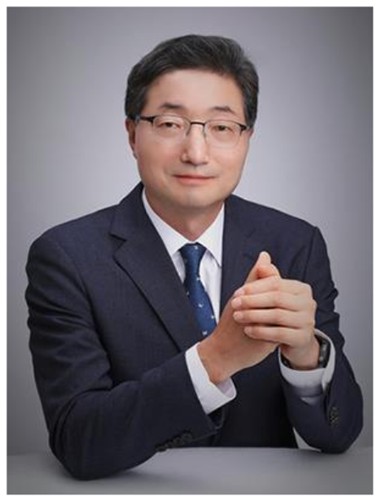The trajectory of the Korean won appears to have entered a new phase. After exhibiting high volatility around the 1,450 won level against the US dollar in the first quarter of this year, the USD/KRW exchange rate has fluctuated around 1,360 since June.
During Q1, the won’s weakness was driven by elevated domestic and external uncertainties. Unpredictable trade policies from the Trump administration and domestic political instability contributed to the won being significantly undervalued compared to global trends. While the US Dollar Index (DXY) fell nearly 4% by the end of March, the won remained at year-end levels.
However, since April, the USD/KRW rate has shifted to a sharp downward trend. After hitting a yearly high of 1,487.6 intraday on April 9, the rate continued to decline, briefly falling below 1,350 on June 30. This represents a drop of over 9% in about three months. While expectations of won appreciation following news of currency consultations with the US played a role, the main driver was the resolution or easing of several uncertainties surrounding the USD/KRW rate.
On July 7, the foreign exchange market was briefly shaken by President Trump’s letter notifying a 25% reciprocal tariff on South Korea, but the impact was short-lived. Although Trump’s tariffs remain a source of uncertainty, the market now treats them as a constant. Whereas high volatility premiums dominated price formation in the first half, the structure of economic fundamentals is now at the center of exchange rate movements.
The medium-term trend of the USD/KRW rate is largely determined by the global value of the US dollar. Many market experts attribute the dollar’s sharp decline this year to concerns over recession from aggressive tariff policies, fiscal deficits and credit rating downgrades, and waning confidence in US asset values. Excessive investment in US assets in recent years and the DXY’s overvaluation relative to its medium-term average at the end of last year are cited as direct causes of the steep drop.
However, alternative interpretations exist. Some strategists, including Ed Yardeni, argue that the US dollar’s structural strength is likely to persist, citing the relative resilience of the US economy, the depth of its capital markets, and the dollar’s reserve currency status. They contend that the recent DXY weakness is mainly due to capital flows from Europe and euro strength; should the eurozone economy slow, the European Central Bank (ECB) may shift to a more accommodative stance, potentially reversing the exchange rate trend. Furthermore, with the DXY now well below its medium-term trend since 2022, some analysts see potential for a rebound given current US macroeconomic trends and corporate productivity and earnings.
Compared to global dollar trends, the won’s independent volatility factors appear limited. Although growth forecasts have been sharply revised downward since the start of the year, signs of export recovery, improved corporate earnings, government stimulus efforts, and policy rate cuts are increasing the likelihood of economic stabilization in the second half. Notably, rising housing prices and household debt risks are constraining the Bank of Korea’s ability to cut rates, reducing the likelihood of a wider Korea-US rate differential.
From a foreign exchange supply-demand perspective, the market is closely watching capital market reforms. The government has recently stepped up efforts to enhance corporate governance transparency and foreign investor access through amendments to the Commercial Act and capital market system reforms. These institutional advances are key to boosting the appeal of Korean assets and structurally attracting foreign capital inflows. Since the end of last year, foreign investors have shown keen interest in these issues, which has supported recent investment in Korean assets. According to the Financial Supervisory Service, foreigners were net buyers of over 2 trillion won ($1.45 billion) in Korean equities in May, with continued net investment in the bond market.
However, the sustainability of these foreign inflows depends on the extent of future capital market reforms. With the recent rebound in US equities coinciding with global capital returning to the US, further inflows into the Korean market may slow. Unless US interest rates and the dollar continue a clear downward trend, additional foreign buying could be limited.
In summary, the USD/KRW rate could fall below the 1,350 level in the near term. The dollar’s bearish momentum is ongoing, and it may take several months for any concrete changes in monetary policy from the Federal Reserve or ECB to materialize. However, over a longer horizon, the US dollar retains a structurally strong support base, while the won’s independent appreciation drivers remain limited. The 200 basis point Korea-US rate gap is likely to persist for now, and a shift to a structural inflow advantage in foreign exchange supply-demand remains aspirational.
Therefore, even if the USD/KRW rate declines further in the short term, there is a risk of renewed upward pressure. In particular, as Trump-related uncertainties have not been fully resolved, the risk of high short-term volatility in the exchange rate remains.
This environment calls for caution from both investors and policymakers. Rather than viewing the recent USD/KRW decline as a sustained trend, stakeholders should prepare for potential inflection points. Investors should review their hedging strategies and strengthen risk management. Policymakers should focus on fostering a stable macroeconomic environment rather than intervening hastily in the market. As the fog of uncertainty lifts, a new direction is taking shape. To avoid excessive optimism or pessimism, it is time to place the balance on fundamentals.

(Lee Seung-heon, Professor at Soongsil University / Former Deputy Governor of the Bank of Korea)
(End)
© Yonhap Infomax. All rights reserved. Unauthorized reproduction, redistribution, or AI training/use is strictly prohibited.
Copyright © Yonhap Infomax Unauthorized reproduction and redistribution prohibited.

